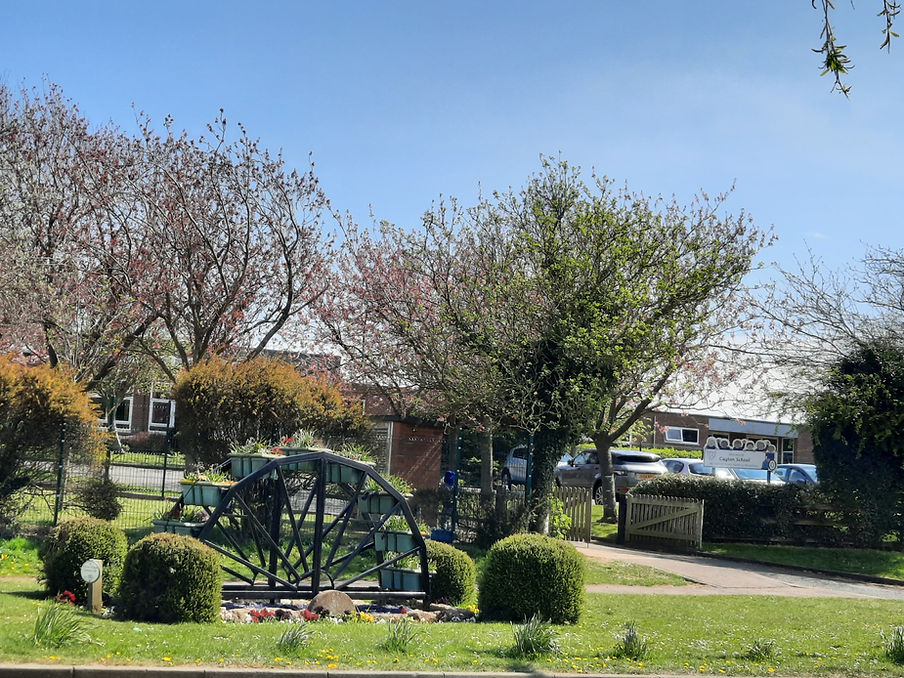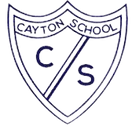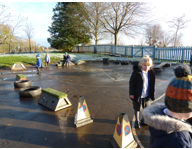

Learn from yesterday, seek today and aim for tomorrow
“There are high expectations for all pupils. Pupils’ attendance is high. Pupils’ conduct in and around school is exemplary.”
“Parents and carers are committed to the school. They are overwhelmingly positive about the impact the school has on their children.” “Pupils thrive in a carefully developed, nurturing environment.” “Pupils have an appetite for learning.”
“All decisions at Cayton are taken with the pupils’ best interests at their centre.” Ofsted November 2024
IMPORTANT: Please note that we are a nut-aware school. Nuts should not be brought into the building due to allergies.
Being a Programmer at Cayton
At Cayton School, it is our intention to enable children to find, explore, analyse, exchange and present information. We also focus on developing the skills necessary for children to be able to use information in an effective way. We want children to know more, remember more and understand more in computing so that they leave Cayton School computer literate. Computing skills are a major factor in enabling children to be confident, creative and independent learners and it is our intention that children have every opportunity available to allow them to achieve this. We intend to build a computing curriculum that develops pupil’s learning and results in the acquisition of knowledge of the world around them that ensures all pupils can understand and apply the fundamental principles and concepts of computer science. This includes logic, algorithms and data representation whereby children can analyse problems in computational terms and have repeated practical experience of writing computer programs in order to solve such problems. We intend to build a computing curriculum that prepares pupils to live safely in an increasingly digital society where children can evaluate and apply information technology, including new or unfamiliar technologies, analytically to solve problems.
The National Curriculum states that ‘A high-quality computing education equips pupils to use computational thinking and creativity to understand and change the world. Computing has deep links with mathematics, science and design and technology, and provides insights into both natural and artificial systems. The core of computing is computer science, in which pupils are taught the principles of information and computation, how digital systems work and how to put this knowledge to use through programming. Building on this knowledge and understanding, pupils are equipped to use information technology to create programs, systems and a range of content. Computing also ensures that pupils become digitally literate – able to use, and express themselves and develop their ideas through, information and communication technology – at a level suitable for the future workplace and as active participants in a digital world.’
Our curriculum reflects these beliefs and has been developed to ensure a deep and consistent pedagogy in the teaching of Computing. Through the teaching of Computer Science, Digital Literacy and Information Technology (both plugged and unplugged) the curriculum enables children to make links with the current world and digital climate we live in.
The Learning Journey
Early Years
While the EYFS framework may no longer explicitly include technology, it remains a vital tool for delivering a well-rounded education. By integrating computing into early years education, we can equip our children with the skills they need to navigate the digital world confidently and safely.

Computing in EYFS ensures that pupils enter Year 1 with a strong foundation, builds problem-solving abilities, encourages resilience and supports other areas of learning. By integrating computing into EYFS, pupils also begin to build their digital literacy and their understanding of e-safety.
Building a strong foundation
Computing in EYFS doesn’t have to mean creating a PowerPoint, or writing a Word document! It can be unplugged activities which don’t use a computer. It can also be activities which familiarise pupils with technology they may use more formally in KS1. For example, computing in EYFS may look like taking photos with a tablet, tinkering with a Bee-bot, doodling on an iPad or including an old keyboard in the role play area.
Building problem solving skills
Computing activities, especially those involving computational thinking, build problem solving skills. Pupils learn to break problems down into smaller pieces and focus on the important facts. They take big problems and turn them into smaller ones which can be solved. These problem-solving skills support pupils across the domains of the EYFS framework.
Encouraging resilience
Computing tasks often require persistence to find a solution. There can be an element of trial and error, or tasks can need debugging. This process helps children develop their resilience as they learn to keep trying until they find a solution.
Supporting other areas of learning
Technology can give a helping hand to other areas of learning. Using a drawing app like Doodle Buddy the Notes app on iPads can help develop fine motor skills, while educational games can reinforce numeracy and literacy skills. Computing activities often require children to follow instructions and explain their thinking, which is great for building communication skills. Plus, computational thinking activities also include pattern spotting and logical thinking, which are important mathematical skills.
Developing digital literacy
In this technological age, digital literacy is becoming an absolutely fundamental skill for all. Introducing computing in EYFS helps children get to grips with technology from a young age, preparing them for a world where digital skills are essential. Plus, it’s a great way to teach early e-safety, ensuring pupils can use tech safely both in and out of school.
Key Stage One

Throughout Key Stage One, children will develop their understanding of what information technology (IT) is and will begin to identify examples. They will discuss where they have seen IT in school and beyond, in settings such as shops, hospitals, and libraries. Children will then investigate how IT improves our world, and they will learn about the importance of using IT responsibly.
Children will learn to recognise that different devices can be used to capture photographs and will gain experience capturing, editing, and improving photos. They will use this knowledge to recognise that images they see may not be real. Children’s understanding of instructions in sequences will be developed and the use of logical reasoning to predict outcomes. Children will use given commands in different orders to investigate how the order affects the outcome. They will also learn about design in programming. They will develop artwork and test it for use in a program. They will design algorithms and then test those algorithms as programs and debug them. Children will begin to understand what the term data means and how data can be collected in the form of a tally chart. They will learn the term ‘attribute’ and use this to help them organise data. They will then progress onto presenting data visually using software. Children will use the data presented to answer questions.
Children will listen to a variety of pieces of music and consider how music can make them think and feel. Children will compare creating music digitally and non-digitally. Children will look at patterns and purposefully create music. Children will begin to understand that sequences of commands have an outcome, and make predictions based on their learning. They use and modify designs to create their own quiz questions in ScratchJr, and realise these designs in ScratchJr using blocks of code. Children evaluate their work and make improvements to their programming projects.
Lower Key Stage Two
Throughout lower KS2, children develop their skills in all areas of computing. Children will apply their knowledge and understanding of networks, to appreciate the internet as a network of networks which need to be kept secure. They will learn that the World Wide Web is part of the internet, and will be given opportunities to explore the World Wide Web for themselves in order to learn about who owns content and what they can access, add, and create. They will evaluate online content to decide how honest, accurate, or reliable it is, and understand the consequences of false information. Children will identify the input device (microphone) and output devices (speaker or headphones) required to work with sound digitally. Children will discuss the ownership of digital audio and the copyright implications of duplicating the work of others. In order to record audio themselves, children will use Audacity to produce a podcast, which will include editing their work, adding multiple tracks, and opening and saving the audio files. Children will evaluate their work and give feedback to their peers.

Children will create programs by planning, modifying, and testing commands to create shapes and patterns. They will use Logo, a textbased programming language. Children will consider how and why data is collected over time. Children will consider the senses that humans use to experience the environment and how computers can use special input devices called sensors to monitor the environment.
Children will collect data as well as access data captured over long periods of time. They will look at data points, data sets, and logging intervals. Children will spend time using a computer to review and analyse data. Children will pose questions and then use data loggers to automatically collect the data needed to answer those questions. Children will develop their understanding of how digital images can be changed and edited, and how they can then be resaved and reused. They will consider the impact that editing images can have and evaluate the effectiveness of their choices. Children will explore the concept of repetition in programming using the Scratch environment. Children look at the difference between count-controlled and infinite loops and use their knowledge to modify existing animations and games using repetition.
Upper Key Stage Two
Throughout upper KS2, children develop their skills further in all areas of computing. Children explore how data is transferred over the internet. Children initially focus on addressing, before they move on to the makeup and structure of data packets. Children then look at how the internet facilitates online communication and collaboration; they complete shared projects online and evaluate different methods of communication. They learn how to communicate responsibly by considering what should and should not be shared on the internet and how to report concerns about inappropriate content online. Children will be introduced to creating websites for a chosen purpose. Children identify what makes a good web page and use this information to design and evaluate their own website. Children pay specific attention to copyright, fair use of media and creative commons, the aesthetics of the site, and navigation paths. This will enable the children to understand how to be a respectful and responsible user of technology online. Children explore the concept of variables in programming through games in Scratch.

First, children find out what variables are and relate them to real-world examples of values that can be set and changed. Then they use variables to create a simulation of a scoreboard. Children will be introduced to spreadsheets. They will be supported in organising data into columns and rows to create their own data set.
Children will be taught the importance of formatting data to support calculations, while also being introduced to formulas and will begin to understand how they can be used to produce calculated data. Children will be taught how to apply formulas that include a range of cells, and apply formulas to multiple cells by duplicating them. Children will use spreadsheets to plan an event and answer questions. Finally, children will create charts, and evaluate their results in comparison to questions asked. Children will develop their knowledge and understanding of using a computer to produce 3D models. Children will initially familiarise themselves with working in a 3D space, moving, resizing, and duplicating objects. They will then create hollow objects using placeholders and combine multiple objects to create a model of a desk tidy. Children will examine the benefits of grouping and ungrouping 3D objects, then go on to plan, develop, and evaluate their own 3D model of a building. Children create their own design. Children will apply their knowledge of the programming constructs and use their design to create their own micro:bit - based step counter.
Computing Progression Map - What we learn
Adaptive Teaching in Computing for SEND support

Substantive Knowledge
CS = Computer Science
The fundamental principles of computer science including, algorithms, programming, computational thinking, testing, debugging, networks, the internet and the WWW.
IT = Information Technology
Applying computer systems to solve problems. Finding things out, exchanging and sharing information, reviewing, modifying and evaluating work.
DL = Digital Literacy (including eSafety)
Create digital artifacts, express oneself, develop and present information and ideas using a range of digital technologies.
National Curriculum Coverage

Declarative/ Conceptual Knowledge – ‘knowing that’
Procedural Knowledge – ‘Knowing how’





